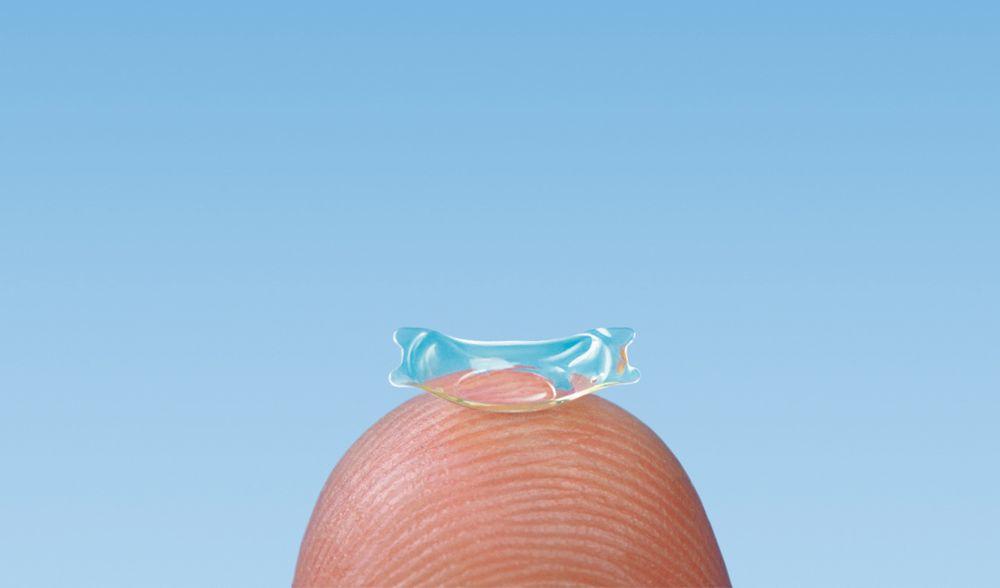Introduction

Phakic ICL lens – tiny but capable of delivering sharp vision and long-term eye safety.
Phakic ICL surgery (Implantable Collamer Lens) is a breakthrough in correcting refractive errors such as myopia, astigmatism, and hyperopia. Unlike LASIK or PRK, which reshape the cornea, Phakic ICL places a biocompatible Collamer lens inside the eye, positioned between the iris and the natural crystalline lens, improving vision without damaging the cornea.
With millions of successful procedures performed worldwide and a patient satisfaction rate of up to 99.4%, this method has become the optimal choice for those with high myopia, astigmatism, or thin corneas.
Advantages of Phakic ICL Surgery
1. Safe and minimally invasive
Phakic ICL surgery is performed through a tiny incision of only 2–3 mm at the corneal edge, without removing corneal tissue like LASIK. This ensures minimal invasiveness and reduces the risk of complications. STAAR Surgical’s exclusive Collamer material has been clinically proven for high biocompatibility and long-term safety. FDA clinical trials also confirm that the risk of serious complications is very low, providing patients with peace of mind.
2. Preserves natural cornea
One of the greatest strengths of Phakic ICL surgery is that it does not thin or alter corneal structure. This is particularly vital for patients with thin corneas or mild keratoconus. Preserving corneal tissue prevents ectasia and maintains stable long-term vision.
3. Protects the crystalline lens and blocks UV rays

Clearer, more confident eyes every day thanks to Phakic ICL surgery
The natural crystalline lens remains intact, meaning the eye’s focusing mechanism is not affected. Additionally, Collamer lenses incorporate UV protection, reducing the risks of cataracts and macular degeneration caused by sun exposure.
4. Suitable for a wide range of patients
Phakic ICL is indicated for patients aged 21–45 with myopia ranging from -3D to -20D and astigmatism up to 4D. It is an ideal choice for those ineligible for laser surgery due to thin corneas or very high prescriptions. Over 3 million procedures have been carried out globally in the past 30 years, demonstrating its safety and popularity.
5. Superior visual outcomes
More than 90% of patients achieve uncorrected visual acuity (UCVA) equal to or better than their best corrected vision with glasses. Clinical studies also show that Phakic ICL significantly improves night vision, making driving or working in dim conditions safer and more comfortable.
6. Reduces dry eye risk
Because it does not cut corneal nerves, Phakic ICL preserves natural tear production and minimizes the chance of post-surgical dry eye. This is a key advantage over LASIK and PRK, where dry eye rates can reach 30–60% after surgery.
7. Decreases dependence on glasses
Patients usually no longer need glasses or contact lenses after Phakic ICL. Sharp, natural vision enhances quality of life, especially for those who are active in sports, travel, or professional work.
8. Adjustable if needed

Advanced technology in Phakic ICL surgery – personalized for each patient to ensure maximum safety and effectiveness.
If vision changes over the years, the Phakic ICL can be removed or replaced with a new lens. This flexibility makes it unique compared to laser procedures, which permanently alter the cornea and cannot be reversed.
9. Long-term eye protection
Collamer material is not only safe but also durable for the lifetime of the eye. The vision correction effect is long-lasting, providing reassurance to patients. International studies also report very high satisfaction, with 99.4% of patients saying they would undergo the procedure again if needed.
10. Fast recovery
The procedure takes only about 20–30 minutes for both eyes. Vision typically improves almost immediately, and most patients return to normal activities within 1–2 days. This quick recovery makes it highly suitable for busy lifestyles.
Disadvantages of Phakic ICL Surgery
- Higher cost compared to LASIK or PRK, since each lens is custom-made for every patient and imported from Europe, the U.S., or Switzerland.
- Longer waiting time because the ICL/IPCL lens is manufactured to individual eye measurements and often not immediately available, meaning patients may need to wait several weeks before surgery.
Table: Comparison of Phakic ICL with LASIK and PRK
| Criteria | Phakic ICL | LASIK | PRK |
|---|---|---|---|
| Corneal tissue removal | No | Yes | Yes |
| Suitable for thin corneas | Yes | Limited | Limited |
| Dry eye risk | Low | High | High |
| Removable | Yes | No | No |
| UV protection | Yes | No | No |
| Recovery | 1–2 days | 3–7 days | 1–2 weeks |
Phakic ICL surgery is a modern, safe, and effective solution for those who want to improve vision without corneal reshaping. With the 10 outstanding advantages discussed above, it is the ideal choice for patients with high myopia, astigmatism, or thin corneas.
To ensure safety and the best results, patients should undergo thorough eye examinations at reputable ophthalmology centers, where experienced refractive surgeons and advanced technology are available.

 vi
vi 27-Sep-2025
27-Sep-2025











 0916.741.763
0916.741.763 Appointment
Appointment